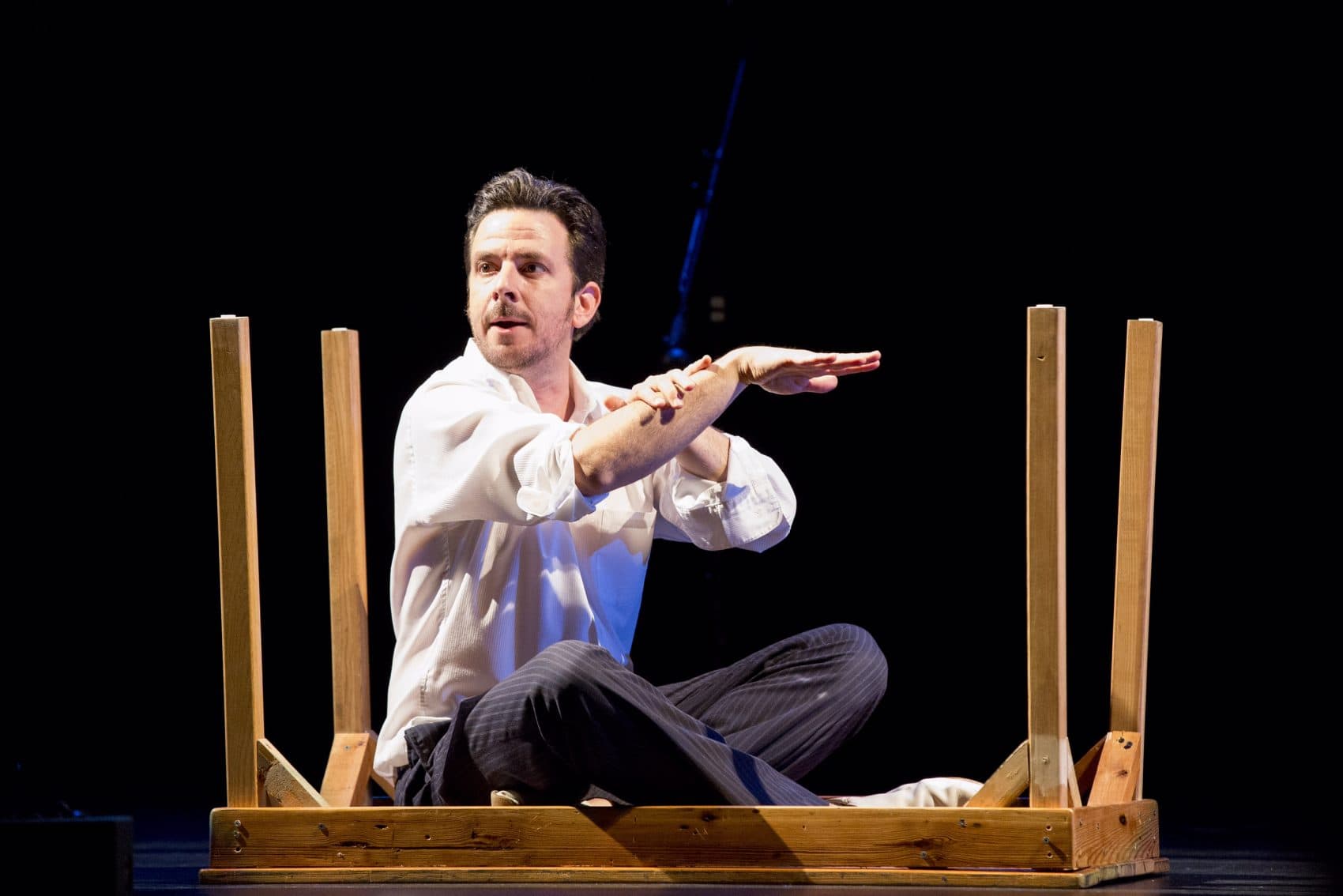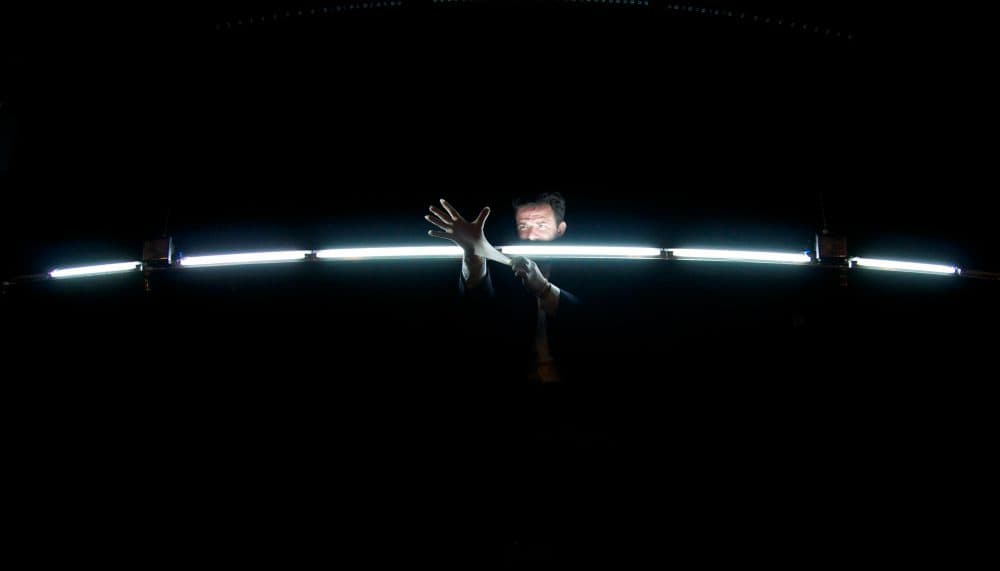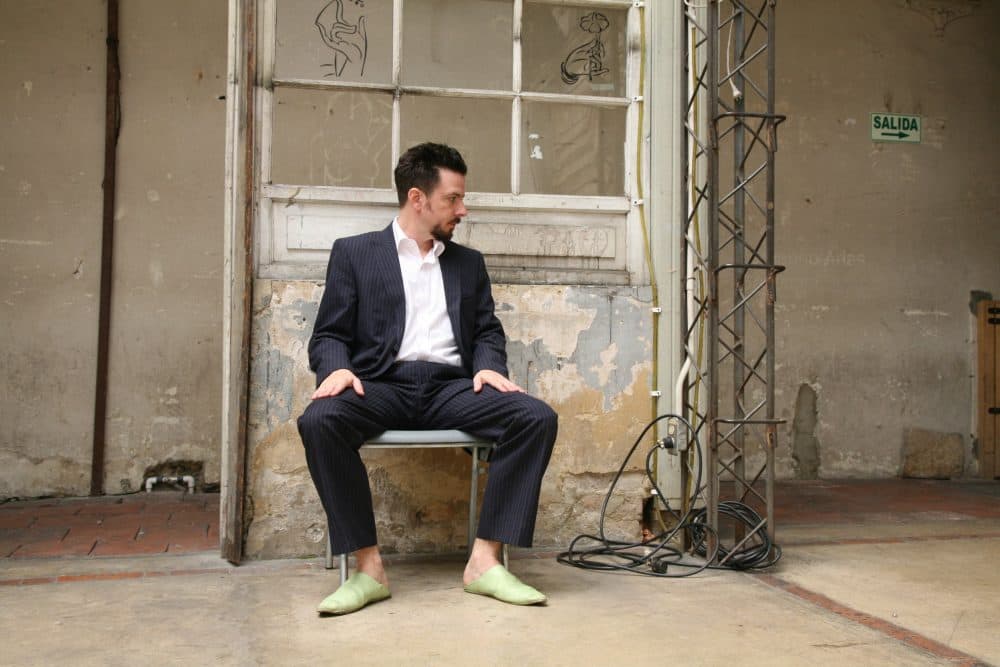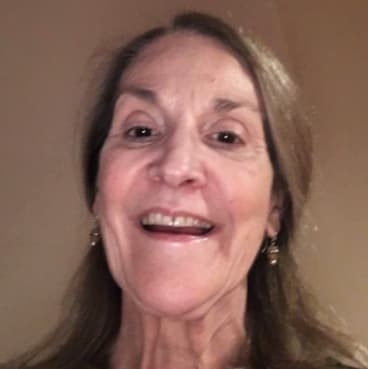Advertisement
Review
'17 Border Crossings' Takes A Trip Through The World's Increasingly Permeable Borders

The first boundary alluded to in “17 Border Crossings” (presented by ArtsEmerson at the Paramount Center through April 29) is between England and France, and the year is 1415. That is when, according to Thaddeus Phillips’ solo theater piece, Shakespeare’s Henry V, rallying his troops on St. Crispin’s Day, invented the passport: safe conduct home for any soldier lacking the stomach to fight. So just don’t expect this quirky, inventive account of one man getting his passport pounded to be an urgent, up-to-the-minute consideration of recent refugee crises, deportation threats and the ominous rise of nationalism, and you’ll not be disappointed.
"17 Border Crossings" — directed by Tatiana Mallarino but created, designed and performed by the nimble Phillips with the aid of little more than a table, a chair and an adjustable 15-foot bar of harsh lights — predates its own perceived timeliness. Inspired by the theater artist’s experiences at national dividing lines around the world, beginning in the 1990s, the show premiered in 2013 in Philadelphia and has since crossed about as many borders as its inventor.

Moreover, Phillips is no stranger to Boston. ArtsEmerson presented his “Red-Eye to Havre de Grace,” about Edgar Allan Poe’s harrowing last days, as part of its 2013-'14 season. Now comes this oddball, sometimes menacing travelogue, reminiscent of a Spalding Gray monologue but also echoing, with less visual bells and whistles, the physically disorienting theater of Canadian visionary Robert Lepage, with whom Phillips worked early in his career.
Each of the play’s titular events is a sort of mini-play, some as benign and brief as a crossing by chair lift from Austria into Germany, others — including stints in interrogation rooms from Bali to Newark — as sinister and absurd as anything out of Kafka. But the peripatetic traveler, whether inadvertently ferried into a Croatian war zone or having his anus searched by an insouciant Frenchman, takes it all in dexterous, curious stride.
Some stories, rendered with more irony than provocation, are bizarre. Phillips, bathed in an eerie green light, reenacts a 1999 train journey from Prague into Serbia in which he plays himself, a couple of lackadaisical conductors and a strange compartment mate who enters the train with a lot of battered luggage tied up with duct tape and bubble wrap. It looks like “installation art” from a Venice Biennale, the performer observes. Once the Serbian border is crossed, the guy tugs open a window and throws his suitcases out, whereupon they are collected and spirited away in waiting cars.
Other tales are both scary and surreal: the performer and a Croatian artist friend have flown from Singapore to Bali to witness a nine-hour shadow-puppet epic. Following a who's on first exchange, they are thrown out because Croatia, which was not an independent nation until 1992, does not appear on a list of allowable entrants from 1983. This episode is made the more disorienting by the performer’s turning it -- furniture, himself and all — on its side, so that we appear to be watching from overhead.

All of the anecdotes exist within the context of their craziness in an increasingly global culture. Moreover, there is the tacit acknowledgement that these are the experiences of a privileged American traveling with a valid passport. By contrast, there is a semi-poetic accounting of the 2012 “crossing” by a young African stowaway who fell, frozen, from the wheel well of a Britain-bound jet as it passed over the London suburbs and unlocked its landing gear. This while the paying passengers, snug in their airborne carapace, were free to watch “Along Came Polly” starring Ben Stiller, Jennifer Aniston and a ferret.
Then there is an early 21st century idyll in which Phillips travels by water between Syria and Greece with his wife (Mallarino) and son, the boy "screaming with happiness" when not repeatedly asking, as kids will: “Are we there yet?” This causes the performer to reflect, if briefly, on a photograph he saw of a Syrian man, a refugee traveling with his daughter. Did she make the same query? And did her father have the courage to tell her their journey had only just begun?
Toward the end of the piece, there is a complicated journey, charted by the artist in chalk on the stage floor, of a crossing from Peru into Brazil to take another trip, one requiring not a passport but a shaman and some very potent plants. Lying on the floor, his legs and his mind pedaling upward, the performer reenacts a wild if toxic float, perceiving himself to be above Brazil, then above the world, looking down on, well, walls: one between Hungary and Serbia, one between Israel and Gaza, the Great Wall of China.

Metaphorically, at least, this lands our rambling raconteur in 2017 in El Paso, Texas, where there is no wall yet but for 50 cents you can park your rental car and walk into Juárez, Mexico. There follows an account involving a deportee named Pablo, some chile rellenos, the U.S. Border Patrol, a Kmart sea craft and a great escape. Truth or fiction, it represents Phillips’ earnest effort to drag “17 Border Crossings” across the prickly boundaries of the present.
But it really wasn’t imperative, and it doesn’t get the job done. There is value, however, in the original work’s depiction of the world’s gradual, reluctant adjustment to its increasingly permeable borders, as seen by one artistic adventurer with the ability to casually hop among languages, nations and nonsensical divides, translating his meanderings into one sensorially ingenious piece of theater.
